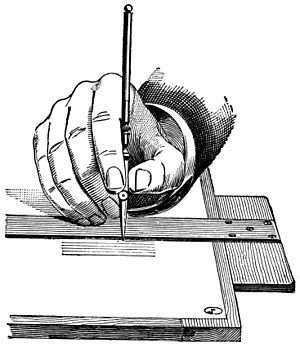Google keeps on updating their search algorithms time and again in order to improve the quality of search results on a regular basis. Way back Google announced a
PageRank technology to display quality search results as the webmasters were misusing the keyword tag extensively and there was a lot of black hat which was affecting the quality of results on the search engines.
Recently we have the Panda update which is a major update to the algorithm affecting the SERPs.
Google mentioned on its
blogpost when they first announced (Feb. 24 2011) the Panda Update 1.0 that “This update is designed to reduce rankings for low-quality sites—sites which are low-value add for users, copy content from other websites or sites that are just not very useful. At the same time, it will provide better rankings for high-quality sites—sites with original content and information such as research, in-depth reports, thoughtful analysis and so on.”
It also added “we’re very excited about this new ranking improvement because we believe it’s a big step in the right direction of helping people find ever higher quality in our results.”
On April 11th 2011 Google made this a global update and said Google's
quality guidelines provide helpful information about how to improve your site.
In May 2011 and now in June 2011 Google has further updated and tweaked the algorithm for applying it more efficiently and reward site which follow the guidelines , are rich in quality content and are a source of valuable information for the user (searcher).
So far, the Panda schedule has been like this:
·
Panda Update 1.0: Feb. 24, 2011
·
Panda Update 2.0: April 11, 2011 (about 7 weeks later)
·
Panda Update 2.1: May 10, 2011 (about 4 weeks later)
·
Panda Update 2.2: June 16, 2011 (about 5 weeks later)
An Algorithm is a set of mathematical equations or rules that a search engine uses to rank the content contained within its index in response to a particular search query.
The Google Algorithm is the mathematical formula that Google uses to create the results (SERPS) when you do a Google search.
As Larry co-founder of Google said long ago, we want to give you back “exactly what you want.”
On June 14th 2011 at the Inside Search Event Amit Singhal said that speed is something Google is obsessed about Google wants to make the search experience and browsing as smooth and as fast as like flipping a magazine and even avoid the delay of 5 secs. which usually is the case when a query is entered and the search results are displayed.
The Panda update is an effort to achieve both these objectives of quality search results and speed. The main focus is on quality content and the usability of the site for the user. Google wants to reward sites with quality content and are created with a focus on the user convenience of use and navigation.
So, the million dollar question is :
What Is Quality Content?
Google has even answered that on their blog by posing 23 questions for a site:
http://googlewebmastercentral.blogspot.com/2011/05/more-guidance-on-building-high-quality.html
Point-wise And In A Precise Manner The Content Reflects High standards Of Quality If the content is :
1. Trust worthy
2. Written by an expert
3. Not duplicated with other variations on the same site
4. The site can be trusted for credit card payments
5. Does not have spelling and style errors
6. The topic is in sync with what the readers want to read about
7. Is original
8. Adds value to the topic
9. Checked for quality standards to provide good UX
10. Unbiased and give both sides of the story
11. Hosted on Domain Authority
12. Is not mass produced
13. Is edited well
14. Trust worthiness related to important matters like health
15. Reflects brand authority
16. Is complete and offers an overall view about the topic
17. Stating facts or discussing the topic with insights
18. Is it worth sharing
19. Having a lot of Ads. Loses the true essence of information and knowledge
20. Is the content worth being printed
21. Is it long enough to be informative
22. Is attention given to detail
23. Is published with good UX
Read More on:
http://blog.webpro.in/2011/05/quality-content-site-guidelines-and.html
If your site meets the above requirements, does not have the violation factors as mentioned on the
SEO Periodic Table , has a good download speed and ensures a good UX (User Experience) then your site is well adapted to the new Panda Update.
Hence, instead of hastily modifying the on-page factors : Focus on :
· developing quality content
· sharing more valuable information with your visitors
· improving the technical factors
(Page Download Speed , Internal Architecture And Navigation, Bounce Rate , Engagement of the visitors on the site ,Time On Site) of your site.
If your site helps Google achieve its objectives of 'QUALITY SEARCH RESULTS' then the Google Algorithm helps your site achieve its objectives of SERPs and Search Visibility. 






























